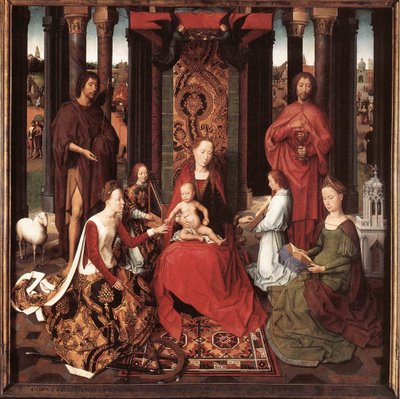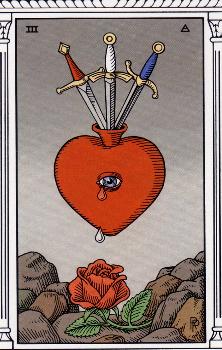Affliction Rules With Vinegar

“So we must press onward to the final stage, the rubedo, which has often been called the 'Marriage of Luna and Sol', the fusion of the human and divine, the union of the personality (Luna) with the essential Self (Sol). Now the retort can be opened to reveal the philosopher's stone, the pure gold of Wisdom, the diamond body, the Gnostic Anthropos, the Heavenly Man, Salvator, filius macrocosmi; by whatever name it has been called, there now stands forth the divine original man, long buried and forgotten in the very centre of our being. Jung quotes the 17th century alchemist, Gerhard Dorn: ‘Transform yourselves from dead stones into living philosophical stones!' [Jung, C.G., Psychology and Alchemy (Collected Works, Vol. 12), page 256.].”
Joy Mills ‘The Human Journey - Quest for Self-Transformation’ (The Blavatsky Lecture delivered at the Annual Convention of the Theosophical Society in England, 27 May 1978)
Are we all golems, fragile mounds of stardust, which may only be animated by the divine spark which we stoke within us? I think so. We spend too much of our lives trapped between competing conceptions of self, which any degree of contemplation would reveal as false, every one. It is our secret thoughts, the ideas and visions, dreams and ideals that we fear to reveal, that we hide and obfuscate, that we will not express even to our friends - until the candles have burnt low, and the wine is nearly drunk and curtained windows comfort us – it is these secret thoughts that are us. It is the secret thoughts that are our spark, your own mind fires make you what you are. It is that spark, that fire which is your parcel of the infinite, your essential fragment of the divine. Become what you are.
“The philosopher's stone. the lapis philosophorum, is frequently spoken of as hermaphrodite, containing within itself all opposites, binding together all the elements in the world. It is said to radiate a cosmically healing effect and indeed he who has found the way to his own inner transformation, healing all divisions within himself, becomes the healer of the world. What began as a lonely way to one's self is found to be, in the end, a glorious path trod in the company of the gods. As Michael Maier, another 17th century alchemist quoted by Jung, has expressed himself: 'There is in our chemistry a certain noble substance over whose beginning affliction rules with vinegar but over whose end joy rules with mirth. Therefore I have supposed that the same will happen to me, namely that I shall suffer difficulty, grief, and weariness at first, but in the end shall come to glimpse pleasanter and easier things.[ lbid., pp. 260-61.] ”
Joy Mills, Ibid.
Did anybody say it would be easy? I don’t remember saying it would be easy. I don’t remember anyone else saying it would be easy. I think we might have just assumed it would be easy. But what do we really mean by ease? Don’t we mean something that can be achieved without me changing, aren’t we saying that we want a change without actually transforming? That we want to eat our cake and have it? Stop associating your life with ease and safety, security and stasis, ease and safety are not life, security and stasis are death. Engage with joy, take a risk, follow your bliss, kiss me you fool.
“If, as Jung has pointed out, ‘The terrors of death on the cross are an indispensable condition for the transformation,'[Jung, C.G., Psychology and Religion (Collected Works, Vol. 11), Bollingen Series, Pantheon Books, New York, 1958, page 221.] we may also be equally certain that out of the long series of reincarnations and metempsychoses there will come that experience of the Self which, as Dr. von Franz has so beautifully stated, 'brings a feeling of standing on solid ground inside oneself, on a patch of inner eternity which even physical death cannot touch.[von Franz, Marie-Louise, C. G. Jung, His Myth in our Time, G.P. Putnam's Sons, New York, 1975, page 74.] ”
Joy Mills, Ibid.
Affliction Rules With Vinegar
Two great queens have risen from the dust about me
and whether I am the:
king;
consort;
confidante;
or serf,
in this repertory theatre
of incarnations -
I know not.
How many correlations
will the mathematics
of life on Earth allow?
Is each particle of soil
a fraction of us
every parcel of earth
an anthrosol
from which we are again and again
conjured, summoned
to this dance of dust?
The White Queen and I
phase in and out of pattern
some misprint, misalignment
of image and of song
mis-stepping, tripping
in a spiral about the ballroom
which nevertheless holds
never falling, never striking the walls.
The Black Queen
moves slowly, alone on the balcony
but I guess every move before she makes it
and my gesture is a sentence she finishes.
Night after night
in a dream of morning
a soldier to matriarchy.
Offering my service
to the grapeyard.
Old wine in new bottles.
The revolution of selves
across centuries
balanced by the terroir
that attracts us
again and again.
of blood and belonging
uncorked once more.
James Piers Taylor, 29th November 2006 - London
IMAGE: The Mystic Marriage of St Catherine - St John Altarpiece [central panel] (1474-1479) by Hans Memling.














